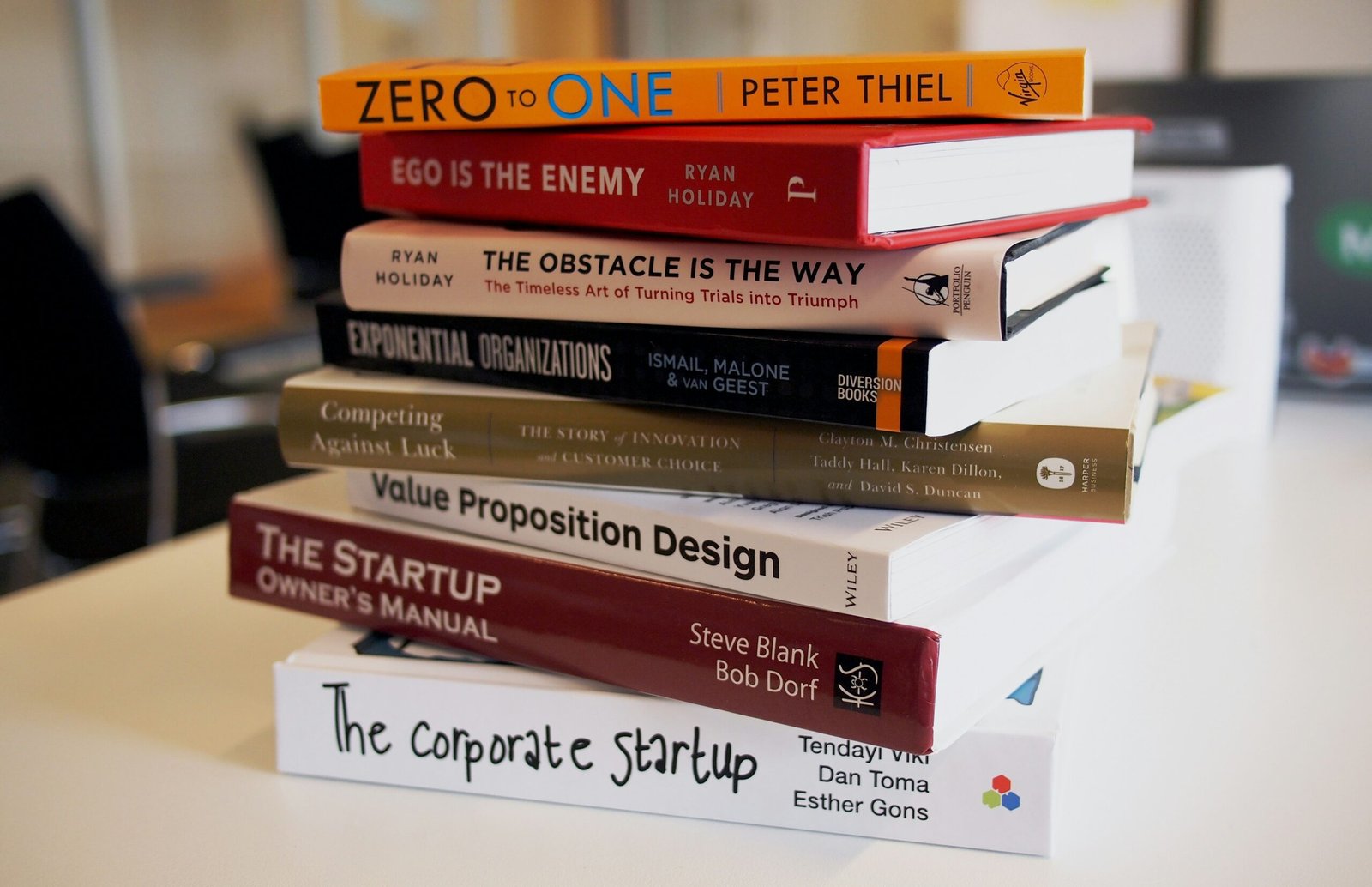Introduction to the Lean Startup
The Lean Startup methodology is a revolutionary approach to building businesses that emphasizes rapid iteration, customer feedback, and evidence-based learning. Originating from the 2008 book “The Lean Startup” by Eric Ries, this framework emerged from the desire to address some of the pervasive challenges faced by entrepreneurs, particularly in creating viable products and achieving product-market fit. Traditional business models often rely on lengthy planning phases and assumptions that lead to significant resource waste. The Lean Startup counters this by promoting a cycle of build-measure-learn, enabling startups to validate their ideas and make informed decisions more swiftly.
At its core, the Lean Startup methodology offers a structured approach to transforming ideas into actual products that meet customer needs. One of its critical elements is the concept of “validated learning,” where startups test hypotheses about their business models through experiments, adjusting as necessary based on gathered data. This process minimizes risks associated with developing a product or service that does not resonate with the target market. As a result, entrepreneurs can identify what works, what doesn’t, and pivot strategies effectively.
Another crucial aspect of the Lean Startup is its focus on iterative development. Instead of launching a fully developed product, companies are encouraged to introduce a minimum viable product (MVP) to the market. An MVP allows startups to collect customer feedback quickly, facilitating a more dynamic approach to product development. This strategy reduces time and resources spent on features or services that may not appeal to customers, fostering a more adaptable and responsive entrepreneurial environment.
The significance of customer feedback cannot be overstated in this methodology. By incorporating insights from potential users early on, startups can ensure that their products align with market needs, enhancing the overall likelihood of success. Through a commitment to continuous learning and improvement, the Lean Startup methodology equips entrepreneurs with the tools necessary to navigate the complexities of the modern business landscape.
Core Principles of Lean Startup
The Lean Startup methodology, a revolutionary approach to product development and innovation, is founded on three core principles: Build, Measure, and Learn. These tenets work collaboratively to streamline the development process, minimize waste, and foster an environment conducive to innovation.
The first principle, Build, emphasizes the rapid creation of a Minimum Viable Product (MVP). This MVP is designed to include only the essential features necessary to achieve customer feedback. The intention is to facilitate quick iterations based on real-world data rather than assumptions. For instance, Dropbox is a prominent example, having initially launched with a simple demo video illustrating its product’s functionality. This approach not only validated their concept but also garnered significant user interest before any extensive development took place.
Next, the Measure stage focuses on the collection of data during or after the MVP is introduced to the market. This phase is pivotal as it provides insights into customer behaviors and preferences, enabling entrepreneurs to make informed decisions. Startups like Airbnb effectively employed this principle by gathering data on user interactions and preferences, leading them to adjust their offerings based on validated learning. This rigorous collection and analysis of data allow businesses to assess the effectiveness of their MVP and iterate on it intelligently.
Finally, the Learn principle calls for a continuous feedback loop. Businesses analyze the data collected, assess their assumptions, and pivot or persevere based on their findings. This agile approach encourages adaptability and resilience, which are crucial in the ever-evolving landscape of startups. Companies such as Zappos have successfully implemented this principle by routinely revising their strategies based on customer feedback, ensuring they remain aligned with market demands. Together, these principles foster an iterative development process that enhances innovation and reduces waste, providing a practical framework for burgeoning entrepreneurs.
Validating Ideas: The Importance of Customer Feedback
In the Lean Startup methodology, validating ideas through customer feedback plays a crucial role in ensuring that product development aligns closely with market needs. Before investing significant resources into a new product, entrepreneurs must gather and analyze insights from potential customers to ascertain product-market fit. This validation process can mitigate risks and enhance the likelihood of success.
Surveys are one of the most common tools for obtaining customer feedback. By designing targeted questionnaires, businesses can reach a broad audience and gather quantitative data on consumer preferences and behaviors. Surveys allow entrepreneurs to gauge interest in their product concepts and identify features that potential users consider essential. Additionally, online survey platforms facilitate easy distribution and data collection, making this method both efficient and effective.
Interviews provide a deeper insight into customer thoughts and emotions, enabling more qualitative feedback. Conducting one-on-one interviews allows startups to explore the motivations behind customer preferences and to understand their pain points personally. This direct interaction can reveal nuanced details that may not come through in standardized surveys, enhancing the product development process.
Focus groups offer a collaborative approach to gather customer feedback. By bringing together a selected group of participants who represent the target market, entrepreneurs can observe discussions surrounding their product ideas. This method encourages dynamic conversations, revealing how potential customers relate to various product aspects in a group setting. Focus groups can also unearth ideas for features or improvements that may not have been initially considered.
Incorporating these feedback mechanisms not only helps in refining business ideas but ultimately leads to products that meet customer expectations more closely. The iterative process of seeking and integrating customer feedback helps entrepreneurs recognize what resonates with their audience, paving the way for a successful product launch.
Minimum Viable Product (MVP): A Key Component
The concept of a Minimum Viable Product (MVP) is foundational to the Lean Startup methodology, serving as a critical tool for entrepreneurs aiming to validate their business ideas efficiently. An MVP is the simplest version of a product that allows teams to collect the maximum amount of validated learning about customers with the least effort. By focusing on core features essential to solve a specific problem, startups can launch products rapidly and begin the process of customer feedback, which is crucial for iterative development.
In the context of Lean Startup principles, developing an MVP enables entrepreneurs to test their business hypotheses while minimizing both resources and risks. This approach allows creators to gather insightful data on customer preferences and behaviors, informing them on how to iterate or pivot their product effectively. For example, Dropbox initially launched a simple explainer video demonstrating its file-sharing capabilities before building the actual product. This MVP approach helped them gauge interest and secure early adopters without significant upfront investment.
Another notable example is Zappos, which began as an online retailer leveraging images of shoes taken from local stores. By focusing on selling products without the inventory overhead, Zappos was able to test its market viability and gain insights into customer demands. Such effective use of an MVP exemplifies how businesses can achieve meaningful results through minimal intervention, ultimately leading to successful product-market fit and scalability.
In summary, leveraging a Minimum Viable Product is paramount in the Lean Startup framework. Not only does it allow for rapid testing of market needs but it also facilitates learning what customers truly want, enabling startups to evolve their offerings in response to real-world data and feedback.
Pivoting vs. Persevering: Making Strategic Decisions
In the realm of the Lean Startup methodology, one of the most significant challenges entrepreneurs face is determining whether to pivot or persevere based on feedback and results from their Minimum Viable Product (MVP). The decision-making process is crucial, as it can dictate the future trajectory of the startup. Entrepreneurs must evaluate various signals that can indicate whether continuing with the current strategy is viable or if a pivot is necessary.
Key signs that it may be time to pivot include negative customer feedback, a lack of user engagement, or unmet market needs that were initially anticipated. If the MVP fails to resonate with the target audience, it may suggest that the product-market fit is not aligned. Additionally, if the metrics for success—such as user acquisition rates or retention numbers—are stagnant or declining, these may also serve as critical indicators that a change in course is required. Adapting quickly to these insights can allow startups to conserve resources and redirect efforts effectively.
There are several types of pivots that entrepreneurs can consider. A zoom-in pivot focuses on a specific feature of the product that is gaining traction, allowing the startup to build around that core element. Alternatively, a zoom-out pivot might involve broadening the product scope to incorporate additional use cases. Other options include a customer segment pivot, where the business shifts focus to a different target audience, or a technology pivot, which involves changing the underlying technology of the product to enhance its offering. Each of these pivots emphasizes the importance of being adaptable in the fast-paced startup environment.
Ultimately, the ability to pivot or persevere effectively hinges on active engagement with customer feedback and market data. Startups must leverage these insights to make informed strategic decisions that align with their long-term objectives.
Measuring Progress: Key Metrics to Track
In the realm of startups, measuring progress is a crucial step toward achieving success. Entrepreneurs face the ongoing challenge of determining which metrics to monitor in order to effectively assess their startup’s performance. Understanding the distinction between vanity metrics and actionable metrics is essential for making informed decisions.
Vanity metrics are often misleading, as they may present a positive image of progress without providing insight into the actual health of the business. For example, tracking the number of social media followers or website visits can be encouraging, but these numbers do not necessarily correlate with revenue growth or customer retention. While these figures may look impressive, they do not provide actionable insights that can drive strategic decisions.
Conversely, actionable metrics offer valuable information regarding customer behavior, product performance, and overall business health. These metrics serve as key performance indicators (KPIs) that can directly influence strategy and foster improvement. Essential actionable metrics include customer acquisition cost (CAC), lifetime value (LTV), churn rate, and conversion rates. By focusing on these KPIs, entrepreneurs can develop a clearer understanding of their business dynamics, enabling them to make data-driven decisions.
To effectively track startup progress, entrepreneurs should establish a framework for measuring actionable metrics consistently. Identifying the right KPIs tailored to their specific business model is vital. For instance, a subscription-based startup may prioritize LTV and churn rate, while a marketplace might focus on user engagement and transaction volume. By selecting metrics that align with their business objectives, entrepreneurs can ensure that their progress tracking efforts lead to tangible results.
In conclusion, by differentiating between vanity metrics and actionable metrics, and selecting the right KPIs, entrepreneurs can measure their startup’s progress more effectively. This approach not only enhances decision-making but also fortifies the foundation for sustainable growth.
Building a Lean Culture: Team and Resources
Establishing a lean culture is integral to the success of any startup implementing the Lean Startup methodology. This culture encourages efficiency, agility, and a strong focus on customer value. Startups can cultivate this environment by first ensuring that the resources are allocated judiciously. Resource constraints are a reality for many startups, and directing these limited resources toward efforts that yield the highest impact can significantly enhance productivity. Businesses should prioritize projects and initiatives that align closely with their objectives and customer needs, minimizing waste wherever possible.
Team dynamics play a crucial role in fostering a lean culture. It is essential for startup teams to work collaboratively and maintain open lines of communication. Empowering team members to take ownership of their tasks fosters a sense of accountability and encourages initiative. Regular stand-up meetings and feedback sessions can enhance transparency, enabling teams to swiftly identify bottlenecks and adapt to changes efficiently. Such practices are instrumental in reinforcing the principles of lean thinking, promoting a culture of shared responsibility and problem-solving.
Continuous learning and improvement should be embedded in the fabric of the organization. Encouraging team members to regularly seek feedback, engage in training sessions, and share insights helps in honing their skills and knowledge, thereby enhancing the overall capability of the team. Implementing retrospectives after projects can be beneficial; they provide an opportunity for teams to reflect on what worked well and what could be improved. Moreover, embracing a mindset of experimentation and innovation allows teams to test hypotheses rapidly and learn from their outcomes. By instilling this culture of learning and adaptation, startups can respond to market changes with agility and drive sustainable growth.
Challenges and Limitations of Lean Startup Methodology
The Lean Startup methodology, while innovative and effective for many entrepreneurs, is not without its challenges and limitations. One notable risk is premature scaling, which occurs when a startup expands its operations or product offerings before validating its market demand. Entrepreneurs may feel pressured to grow quickly, often leading to resources being allocated to scaling rather than to understanding customer needs. This can result in a misalignment between product development and actual market requirements, potentially jeopardizing the startup’s sustainability.
Another significant challenge is the inadequacy of customer feedback. Startups relying heavily on minimum viable products (MVPs) may mistakenly gather insufficient or inaccurate data from early adopters. These limited insights can skew the interpretation of market demand, steering a company in the wrong direction. A lack of diverse perspectives can perpetuate biases, leading to a flawed understanding of the customer base, which ultimately hampers product-market fit.
Team alignment is another critical factor that can present difficulties in the Lean Startup approach. Differences in vision, objectives, or work processes among team members can lead to inconsistencies in executing lean principles. When teams lack coordinated communication, they risk working in silos, which may dilute the effectiveness of iterative testing and pivoting based on feedback.
To mitigate these challenges, startups can implement several strategies. Establishing an effective feedback loop that engages a wider audience beyond early adopters can enhance the quality of customer insights. Diversifying sample groups and periodically re-evaluating MVPs will provide a more holistic view of market needs. Furthermore, regular team alignment meetings can foster collaboration and ensure that all members uphold shared objectives, reinforcing the flexibility essential to the Lean Startup methodology.
Conclusion: Embarking on Your Lean Startup Journey
As we have explored throughout this comprehensive guide on the Lean Startup methodology, the principles encapsulated within this approach are pivotal for aspiring entrepreneurs navigating the complexities of modern business landscapes. The Lean Startup framework emphasizes the importance of validated learning, rapid experimentation, and customer feedback, enabling organizations to innovate efficiently while minimizing waste. By adhering to these core tenets, startup founders can develop products that truly meet market needs, significantly increasing their chances of success.
The Lean Startup methodology encourages a shift in mindset from traditional business practices. Entrepreneurs are urged to adopt an iterative process that prioritizes adaptability and resilience. This approach not only allows for the swift modification of business models in response to consumer insights but also fosters a culture of continuous improvement. Embracing lean principles can lead to enhanced resource allocation, fostering a creative and flexible organizational structure that thrives even amidst uncertainty.
For those interested in learning more about the Lean Startup method, a wealth of resources is available. Books such as Eric Ries’ “The Lean Startup” and Ash Maurya’s “Running Lean” offer in-depth insights into applying lean principles effectively. Additionally, numerous online courses and workshops provide practical knowledge and real-world applications of the Lean Startup methodology. Engaging with entrepreneurial communities, whether through local meetups or online forums, can further enrich one’s understanding and implementation of these strategies.
In conclusion, if you are embarking on your entrepreneurial journey, consider integrating the Lean Startup methodology into your framework. By prioritizing experimentation and consumer feedback, you can refine your vision and establish a business model that not only meets the demands of the market but also sustains growth over time. The road to launching a successful startup may be fraught with challenges, but leveraging lean techniques equips you with the tools needed to navigate it effectively.











